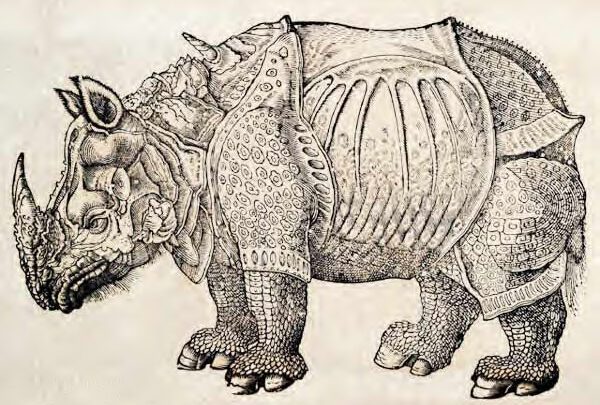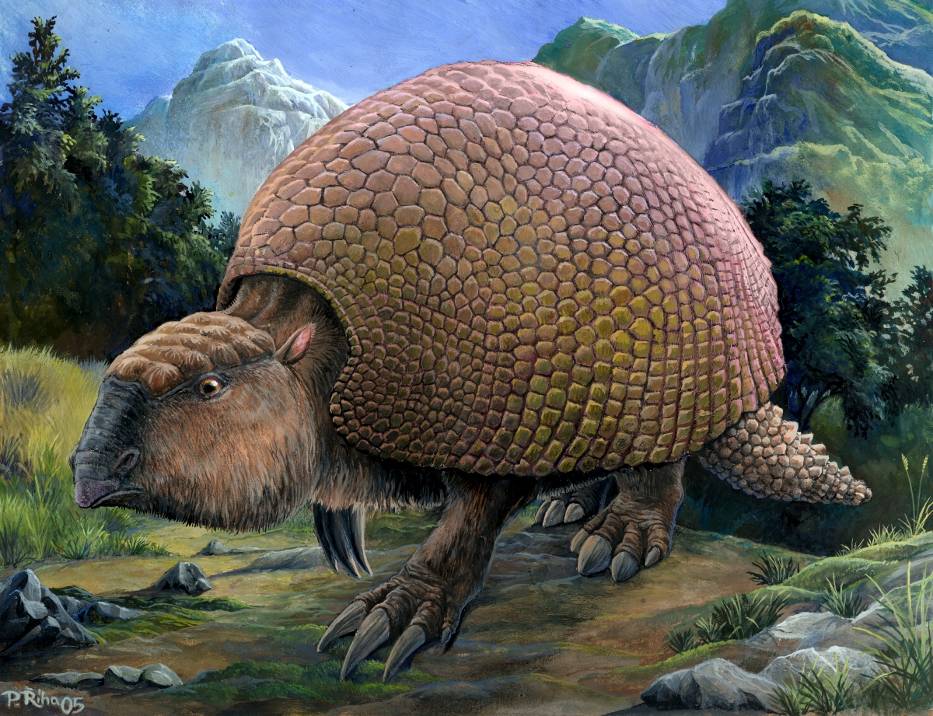
The term “megafauna” refers to the large or giant animals that once roamed the Earth and those that continue to captivate our imagination today. These colossal creatures have left a lasting impression on the planet’s ecosystems, history, and popular culture. From the majestic woolly mammoths to the mighty African elephants, megafauna have shaped the world in profound ways. This article delves into the intriguing world of megafauna, exploring their history, significance in ecosystems, conservation efforts, and the future of these remarkable creatures.
History of Megafauna
The history of megafauna dates back millions of years, encompassing a diverse array of species that dominated various continents. During the Pleistocene epoch, vast herds of mammoths, woolly rhinoceroses, and ground sloths roamed across the grasslands of North America. Meanwhile, the African continent was home to iconic megafauna such as the saber-toothed cats, giant ground sloths, and the awe-inspiring African elephants. These creatures played a pivotal role in shaping the landscapes and ecosystems in which they thrived.
The decline of many megafauna species coincided with the arrival of early human populations. Human hunting, habitat destruction, and climate change are believed to have contributed to the extinction of numerous megafauna species during the late Pleistocene and early Holocene periods. The disappearance of these magnificent creatures marked a significant turning point in the Earth’s ecological history, with far-reaching consequences that continue to be felt today.
The extinction of megafauna has been a subject of intense scientific inquiry and debate, with researchers striving to unravel the complex interplay of factors that led to their demise. By understanding the historical interactions between megafauna and their environments, scientists can glean valuable insights into the dynamics of past ecosystems and the factors that influenced the fate of these extraordinary animals.
Importance of Megafauna in Ecosystems

Megafauna have played a crucial role in shaping and maintaining the ecosystems in which they once thrived. As large herbivores, these creatures exerted a profound influence on vegetation dynamics, soil structure, and nutrient cycling. Their foraging activities and movements helped to shape the distribution and abundance of plant species, influencing the composition of entire landscapes.
Furthermore, megafauna served as keystone species, exerting a disproportionate influence on the ecological communities in which they were embedded. Their presence or absence could trigger cascading effects throughout the food web, impacting the abundance of other species and the overall structure of ecosystems. By browsing on vegetation, dispersing seeds, and creating microhabitats, megafauna shaped the diversity and resilience of ecosystems in ways that are still being unraveled by ecologists.
In addition to their ecological significance, megafauna have also been instrumental in shaping human cultures and societies. Throughout history, these majestic creatures have inspired awe, reverence, and artistic expression, becoming integral to the mythologies and traditions of many civilizations. The enduring cultural impact of megafauna underscores their profound significance in the human experience and the collective consciousness of different societies.
Also read: Saving Our Precious Coral Reefs: A Call to Action
Threats to Megafauna
Despite their historical importance, megafauna face an array of contemporary threats that jeopardize their survival. Habitat loss, poaching, climate change, and human-wildlife conflict pose significant challenges to the conservation of these iconic species. The relentless encroachment of human activities into wild spaces has led to the fragmentation and degradation of habitats, pushing megafauna populations to the brink of extinction.
Poaching, driven by the demand for ivory, horns, and other wildlife products, has decimated populations of iconic megafauna such as elephants and rhinoceroses. The illegal wildlife trade continues to fuel the relentless slaughter of these majestic animals, posing a grave threat to their long-term survival. Furthermore, climate change is exacerbating the challenges faced by megafauna, altering their habitats, disrupting migration patterns, and placing additional stress on already vulnerable populations.
Human-wildlife conflict is also a pressing issue, particularly in regions where megafauna and human communities coexist. Encounters between elephants, big cats, and other large species and human settlements can result in conflict, leading to human fatalities and retaliatory killings of wildlife. Finding sustainable solutions to mitigate these conflicts is essential for safeguarding the future of megafauna and fostering harmonious coexistence between humans and wildlife.
Conservation Efforts for Megafauna
Amidst these formidable challenges, a concerted global effort is underway to conserve and protect megafauna species from the brink of extinction. Conservation organizations, governmental agencies, and local communities are working tirelessly to implement strategies aimed at safeguarding these iconic animals and their habitats. Efforts to combat poaching, strengthen law enforcement, and reduce consumer demand for wildlife products are critical components of conservation initiatives.
In addition to anti-poaching measures, habitat protection and restoration are essential for ensuring the long-term survival of megafauna. Creating and connecting wildlife corridors, establishing protected areas, and promoting sustainable land use practices are pivotal in preserving the habitats upon which megafauna depend. Collaborative conservation approaches that involve local communities and indigenous peoples are integral to the success of these efforts, fostering mutual respect and shared stewardship of natural resources.
Furthermore, innovative conservation technologies and methods, such as wildlife tracking and monitoring, genetic research, and community-based conservation programs, are being deployed to support the protection and recovery of megafauna populations. By harnessing cutting-edge scientific tools and engaging diverse stakeholders, conservationists are striving to secure a future for these extraordinary creatures and the ecosystems they inhabit.
Notable Megafauna Species
The world of megafauna encompasses a diverse array of extraordinary species, each possessing unique adaptations and ecological roles. From the colossal blue whales that roam the oceans to the majestic polar bears that inhabit the Arctic, megafauna exhibit an astounding array of forms and behaviors. The African continent is home to iconic megafauna such as the African elephants, lions, giraffes, and rhinoceroses, which have long captured the imagination of people around the world.
In the vast oceans, megafauna such as the humpback whales, great white sharks, and leatherback sea turtles command awe and fascination with their remarkable abilities and behaviors. The diverse range of megafauna species underscores the rich tapestry of life on Earth and the intricate web of interconnections that sustain ecosystems. Exploring the lives and behaviors of these extraordinary creatures offers profound insights into the complexities of the natural world and the importance of preserving their habitats for future generations.
Megafauna in Popular Culture
The enduring allure of megafauna has permeated popular culture, inspiring countless works of literature, art, film, and mythology. From ancient cave paintings depicting mammoths and bison to contemporary wildlife documentaries showcasing the beauty of African savannas, megafauna have captivated the human imagination across time and cultures. Their magnificence and power have been immortalized in epic tales, folklore, and legends, underscoring their role as symbols of strength, resilience, and the untamed spirit of the wild.
In the realm of visual arts, megafauna have been a perennial subject of fascination and reverence, with countless artists capturing their essence and grandeur in paintings, sculptures, and other creative expressions. In literature and mythology, megafauna have been woven into the fabric of human storytelling, serving as emblematic figures that embody the mysteries and wonders of the natural world. The enduring presence of megafauna in popular culture reflects the deep-seated fascination and reverence that humans hold for these magnificent creatures.
Also read: The Ultimate Guide to Zero Waste Living: How to Minimize Waste and Maximize Sustainability
Future of Megafauna
The future of megafauna is at a critical juncture, with their survival hanging in the balance. As human activities continue to exert unprecedented pressures on the planet’s ecosystems, the fate of these iconic species is deeply intertwined with our collective actions and choices. In the face of mounting threats, concerted efforts to address the root causes of decline and protect the habitats of megafauna are imperative for securing their long-term survival.
Advancing conservation science, mobilizing public awareness and support, and fostering collaboration among diverse stakeholders are essential for charting a path toward a sustainable future for megafauna. By recognizing the intrinsic value of these magnificent creatures and acknowledging their pivotal role in maintaining healthy ecosystems, societies can work together to ensure that megafauna continue to roam the Earth for generations to come.
Megafauna Research and Studies
Scientific research and studies are pivotal in unraveling the mysteries of megafauna and informing effective conservation strategies. From ecological surveys and population monitoring to genetic analyses and behavioral studies, researchers are employing a diverse array of methods to deepen our understanding of these extraordinary creatures. By integrating field observations, cutting-edge technologies, and interdisciplinary approaches, scientists are shedding light on the ecological roles, behaviors, and conservation needs of megafauna.
In addition to field research, advances in molecular genetics and biotechnology have opened new frontiers in the study of megafauna, enabling researchers to delve into their genetic diversity, evolutionary history, and population dynamics. These insights are crucial for informing conservation actions and developing tailored strategies for the protection and recovery of megafauna populations. Furthermore, engaging with local communities and indigenous knowledge systems is integral to the success of research efforts, fostering collaborative approaches that integrate traditional wisdom with modern scientific methodologies.
The dissemination of research findings and the promotion of scientific literacy are essential for raising awareness about the plight of megafauna and garnering support for their conservation. By communicating the latest discoveries, challenges, and successes in megafauna research, scientists can inspire action and advocacy, fostering a deeper appreciation for these remarkable creatures and the urgent need to protect their habitats.
Conclusion
The world of megafauna is a realm of wonder, intrigue, and profound ecological significance. From the grandeur of ancient mammoths to the majestic giants that roam the savannas and forests of today, these remarkable creatures embody the resilience and diversity of life on Earth. As humanity stands at a pivotal moment in history, the conservation of megafauna represents a crucial test of our commitment to preserving the natural world and the wondrous creatures that inhabit it.
By recognizing the historical legacy, ecological importance, and cultural resonance of megafauna, societies can mobilize collective efforts to protect and conserve these iconic species. Through sustainable land use, habitat protection, anti-poaching measures, and community engagement, the future of megafauna can be secured for generations to come. As stewards of the Earth, it is our responsibility to ensure that the giants of the past and present continue to inspire awe and wonder, enriching the tapestry of life with their enduring presence.
In conclusion, the world of megafauna is a testament to the extraordinary diversity and resilience of life on Earth. By recognizing the historical legacy, ecological importance, and cultural resonance of megafauna, societies can mobilize collective efforts to protect and conserve these iconic species. Through sustainable land use, habitat protection, anti-poaching measures, and community engagement, the future of megafauna can be secured for generations to come. As stewards of the Earth, it is our responsibility to ensure that the giants of the past and present continue to inspire awe and wonder, enriching the tapestry of life with their enduring presence.





